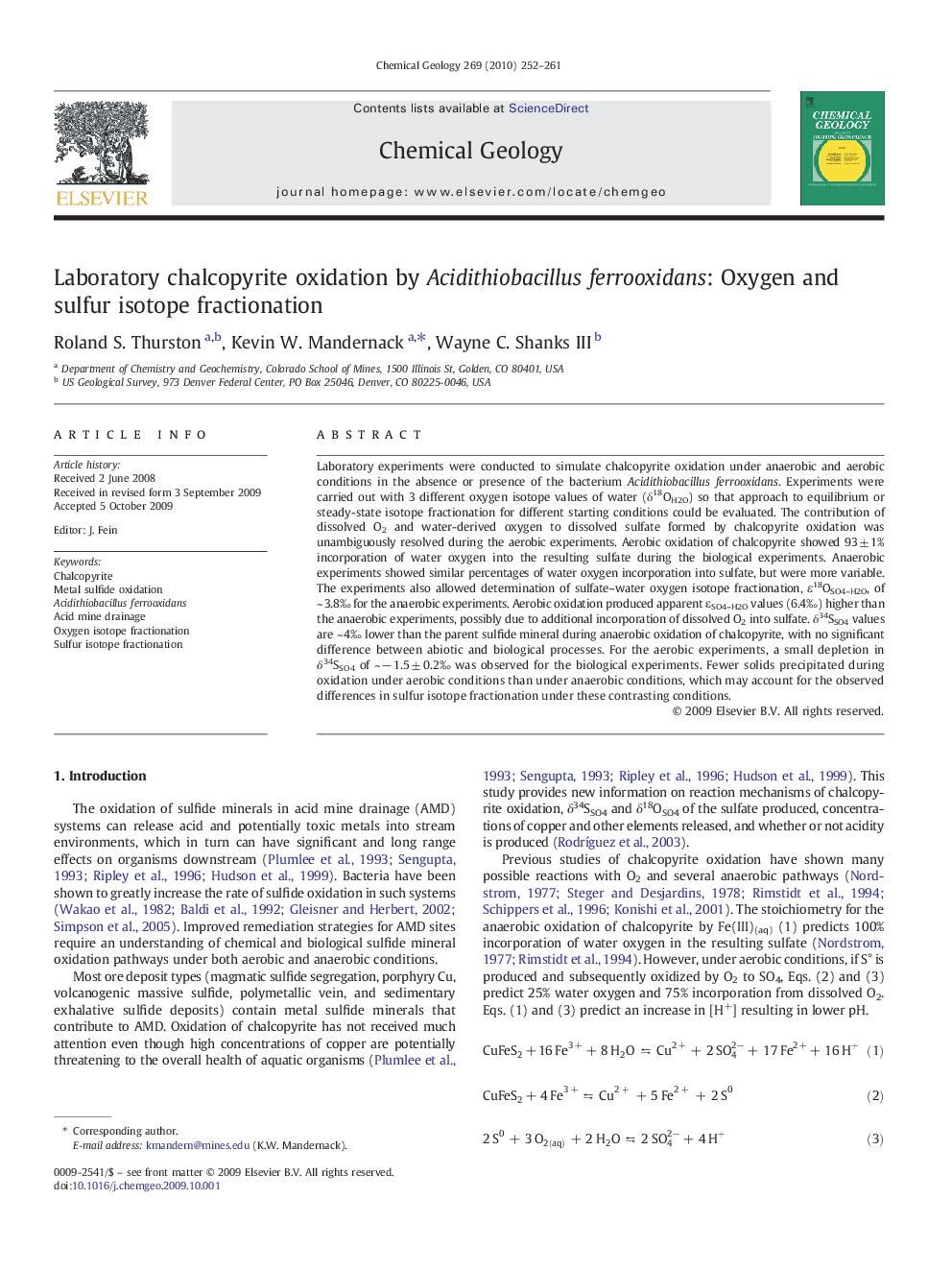| Article ID | Journal | Published Year | Pages | File Type |
|---|---|---|---|---|
| 4700169 | Chemical Geology | 2010 | 10 Pages |
Laboratory experiments were conducted to simulate chalcopyrite oxidation under anaerobic and aerobic conditions in the absence or presence of the bacterium Acidithiobacillus ferrooxidans. Experiments were carried out with 3 different oxygen isotope values of water (δ18OH2O) so that approach to equilibrium or steady-state isotope fractionation for different starting conditions could be evaluated. The contribution of dissolved O2 and water-derived oxygen to dissolved sulfate formed by chalcopyrite oxidation was unambiguously resolved during the aerobic experiments. Aerobic oxidation of chalcopyrite showed 93 ± 1% incorporation of water oxygen into the resulting sulfate during the biological experiments. Anaerobic experiments showed similar percentages of water oxygen incorporation into sulfate, but were more variable. The experiments also allowed determination of sulfate–water oxygen isotope fractionation, ε18OSO4–H2O, of ~ 3.8‰ for the anaerobic experiments. Aerobic oxidation produced apparent εSO4–H2O values (6.4‰) higher than the anaerobic experiments, possibly due to additional incorporation of dissolved O2 into sulfate. δ34SSO4 values are ~ 4‰ lower than the parent sulfide mineral during anaerobic oxidation of chalcopyrite, with no significant difference between abiotic and biological processes. For the aerobic experiments, a small depletion in δ34SSO4 of ~− 1.5 ± 0.2‰ was observed for the biological experiments. Fewer solids precipitated during oxidation under aerobic conditions than under anaerobic conditions, which may account for the observed differences in sulfur isotope fractionation under these contrasting conditions.
